Brief
In this project I will be exploring a more abstract experimental approach towards creating sounds. Completing this project successfully will enable me to extend my creativity by practically sourcing the sounds I need for the two songs. The more research I do alongside this project, the greater my understanding of choosing the right sound for each piece will be. For example for the soundtrack I can use more harsher sounds in order to create a tense atmosphere.
Primary Research
On Sunday the 8th January I started experimenting with some household objects in order to create sounds. I started off by using a PC basic Dynamic Microphone and recording the sounds straight into Logic Pro X.

I started by just looking around my room at objects and trying to guess, musically, in my head about what sort of sound they would’ve made before I attempted to interact with it.
I started off with a plastic mug (used for my DofE Expedition and some camping cutlery that were sitting inside the mug.

This proved to make a very good sound of someone walking along a vinyl floor for example.
I then moved on to producing a metal sound with some metal tongs. This could represent almost anything metal in everyday life. For example a prison.

The next items included the sound of a DVD case opening, a Hairdryer and the sound money; particularly suited to a room with high levels of reverb.



After that I gathered some more sounds including: a kettle, a belt (for the whip-like sound), a clock (for the ticking sound) and the sound of a zip on a large bag.




I then tried some more sounds including the sound of turning pages of a book, the rustling of a plastic bag, the opening a closing of an aftershave bottle and finally the sound of pottery being tapped finely by a fingernail.




I made each new recording on a new track on Logic in order to adjust the gain via Logic because I didn’t have an Interface.

I therefore used a Gain plug-in within Logic to accomplish this.

I also edited the EQ on some of the tracks to make them sound even better. Using a Dynamic Microphone meant only the low-end sounds were captured. Even though I tried to reduce this by using EQ, who I record the sounds properly I will consider using a Condenser mic.

I will also try and record some background noises such as a Train Station. This will give my song(s) greater depth and make it easier to build the song up. I have yet to do some secondary research on what others have done and whether people even make a career out of making music from found sounds.
Secondary Research
Adam Smith (2013) has created a video on YouTube aswell as a track. The sounds used in his track are all found sounds which are Sampled. Some of the sounds Smith uses are, for example, an Aux cable buzzing noise and a bottle filled slightly with liquid to create a sound. This Bottle sound has been placed into a Sampler so it could be pitch corrected and played through MIDI to create a melody.
Computer Music (2012) states a series of Production Techniques which can help when recording found sounds:
Strip Silence
“When you’ve recorded a long pass of audio full of single hits of your latest cupboard treasure, slicing the hits into separate regions can be a chore.
Many DAWs have a strip silence function that can be a boon, especially if your samples have sharp attacks and short decays. Simply set the threshold level for what the software determines as silence, and your samples are all separated out in one go.”
Kitchen Cupboard Percussion
“Plastic boxes of cocktail sticks, salt cellars and pepper grinders are all good candidates for shaker-type sounds. A coffee tin can make a great shaker with its contents intact, and matchboxes are always a good bet for this.”
Bottles
“Glass bottles are usually the first recourse of the kitchen percussionist. Like wine glasses, you can tune them by filling them with varying amounts of water, but you can also blow across the top of them to produce notes.
Similarly, six-pint plastic milk bottles can sound remarkably tabla-like when struck, while opening a fresh bottle of lemonade can provide a snare-like burst of sizzling white noise – so long as you get it on the first try! Try adjusting the pitch after recording.”
Pringle-Tube Balloon Drum
“Get creative in those lazy days between Christmas and New Year by making balloon drums! Cut the neck off a balloon and stretch the remnant piece of rubber over an empty Pringles tube with the lid removed. Secure it around the tube with a length of gaffer tape.”
Tins and Tea Towels
“Those metal tins of chocolates you get at Christmas make great drums when empty, but they’re a bit ringy. To dampen the sound, remove the lid, lay a tea towel over it, tuck in the edges and replace it.”
OConnell (2014) shows a blog of how Electronic Artists are using Found Sounds to their Advantage. She Shows a Video by Diego Stocco recording sounds in a Dry Cleaner.
Garcia (2013) states that old radio players can be used to create static noise which can then be ‘Wrapped’ onto a Guitar track to create a more interesting noise.
Rejected Sources
Source 1:
I rejected this source because the objects the Website was talking about were far too advanced and too vast-a-scale for what I want to include in my track.
https://modeaudio.com/magazine/recording-found-sounds-for-music-production#.WI8sbhS2szI
Source 2:
I rejected this source because on Wikipedia others can make changes so therefore makes this source unreliable.
https://en.wikipedia.org/wiki/Found_object_(music)
Trying some of these Items at Home
On the Evening of the 30th Jan I explored my house for some of the items stated in my secondary research that I conducted during the day. I will use the strip silence technique when I’ve completed the song so I temporarily excluded that for now. I loved the sound of the salt shaker and was immediately drawn to it’s country feel. I didn’t currently have any Pringles or anything that could be used as a balloon drum so I rejected this as a viable option. I found the Tin sounded too harsh and I wouldn’t be able to, unless I added a phenomenal amount of effects not it, make it work with the simple, melodic song I was trying to create.
Recording the ‘Found Sounds’
On Tuesday the 31st January I recorded the two found sounds I am going to use in my Acoustic Song for Project 3. I wanted to produce a country song so in the session before I did some Secondary Research on what types of rhythms Country music uses.
Dooley(2012) displays so very syncopated (off-beat) snare with a “four-on-the-floor” kick drum. I then implemented this into my own piece. I used an empty plastic water container as the bass drum and a half-empty salt shaker for the snare.

I started off by hitting the side of the container which didn’t make much the “Bass’ sound that I was after. Josh as the engineer showed me a way of hitting the bottom with your fingertips to create an amazing bass sound. To record the drum we used an AKG C1000 which is a dynamic microphone used to record low end sounds such as drums. We recorded the track straight into Pro Tools.
Josh then added that when I came round to editing it I would find the timing might be out as I’m not recording to a Click track. He then quickly created one in Pro Tools and then playing it back through the headphones ensured that the recording would be in time. He made the click track to 100 bpm as we tried 120 bpm but that was too fast. I had also established that the song will have to be in 4/4 in order for this to work, including the acoustic guitar part when this gets recorded at a later date.
We had no real technical issues apart from when we wanted to change the overall song tempo and due to our lack of knowledge of pro tools had to research how to do this.


The Acoustic Guitar
I needed to come up with the guitar part for this song and even though I hadn’t completed the rhythm track for the song this didn’t stop me from coming up with a guitar part. I though about playing it on Banjo but on Thursday 2nd Jan I experimented with Lap Guitar and came up with guitar part which, in my opinion, will be accomplished terrifically with the rhythm track.
I also conducted some Primary Research myself on which Lap Slide I wanted to use so I tested some out. The choices were between:
- Lap Steel Weighted Slide
- Shot Glass
The Lap Steel Weighted Slide proved a very nice sound but was very hard when playing quick melodies on. This one was almost too accurate with the frets.
The Shot Glass proved the nicer sound and made the much broader slides and much easier to hold. I got the idea to use this from an Australian artist called Owen Campbell.
“I turned up to a gig one night and forgot my slide, I saw a fella’ at the bar and asked whether I could borrow his shot glass.” – Owen Campbell


When I play Lap Guitar I usually tune the guitar to Open D (DADF#AD). I then decided to put a capo on Fret 1 which makes the song Eb Major. If I later on want to add Vocals then I can sing it because it’s in my range. Just some forward thinking I suppose.
I also came up with a song Structure and Lyrics. Whether I sing it or not is another matter but I can then get one of my peers to sing it instead if it doesn’t sound good.
I also experimented with Harmonica alongside the guitar by placing it in a holding rack that goes around the neck and allows you to play both at the same time. I attempted to play it with the guitar then came to realise that the Harmonica is in the key of C major and the guitar is in Eb Major.
I then did some more Secondary Research on Relative Keys which I gathered from my Music Theory for Dummies book.
Pilhofer and Day (2012, pg 94) display a diagram of Pythagoras’ “Circle of Fifths” which is basically the Maths around song keys.
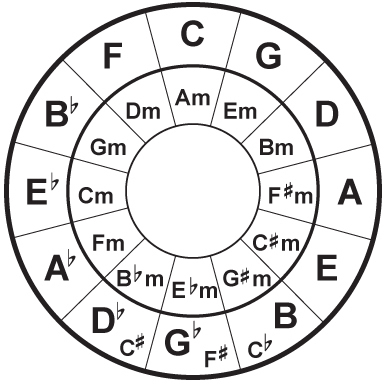
Pilhofer and Day (2012, pg 94) then go on to explain “Each of the 12 points around the circle was assigned a pitch value, which roughly corresponds to the present system of an octave with 12 half steps”.
So if I wanted the Harmonica to be played alongside my Guitar (Eb Major) then the Harmonica would have to be in either Eb Major or it’s relative C Minor or vice versa with the Harmonica in C Major the guitar could be in C Major or A Minor.
My Song Structure is:
- Intro (Instrumental)
- Verse 1
- Verse 2
- Chorus
- Verse 3
- Chorus/Outro
Lyrics
Verse 1
Why do people hustle,
And bustle in the streets.
Sipping their cups of moonshine,
In the mountain on that hill.
Verse 2
Living till their 90,
They overlook their kin.
Learning to read and write,
They’ll conquer what’s wrong or right.
Chorus
Just like a simple rancher,
The mountain life is for me.
Verse 3
Taking my dad’s old truck,
I drove that open road.
To land of hope and glory,
And to my shed-like home.
Outro
Mmmmmmmmhmmmmmhhhhhhmmmmmm
And just like a simple rancher,
The mountain life is for me.
After playing the song multiple times the day after (3rd Feb), I feel that I should maybe make the following changes to the Lyrics:
- Combine the first 2 Verses to make a longer one.
- Extend the 3rd Verse to make it longer.
- Maybe add another Chorus.
Making the Rhythm Track
On the 6th February I began to edit the “Found Sounds” recorded last week. I created a new Logic Pro X project file and then imported the 4 Audio files into the Project window and then into the Workspace onto to 4 different tracks.

I changed the Project Tempo to 100 bpm as this is the tempo of my song and the tempo that we recorded the found sounds to.
I changed the gain of the salt shaker to +15.0 db as it was very quiet.
I then found a four-beat-bar that was the most precise and used this as a loop for the song. I did this for both “Found Sound” Instruments.

I also experimented with the EQ for the Bottle Bass dramatically. I started by thinking about what I wanted to achieve by altering the EQ and I came to a hypothesis that as I was attempting to get a low bass/kick drum sound, I would want to eliminate all the high-end frequencies.
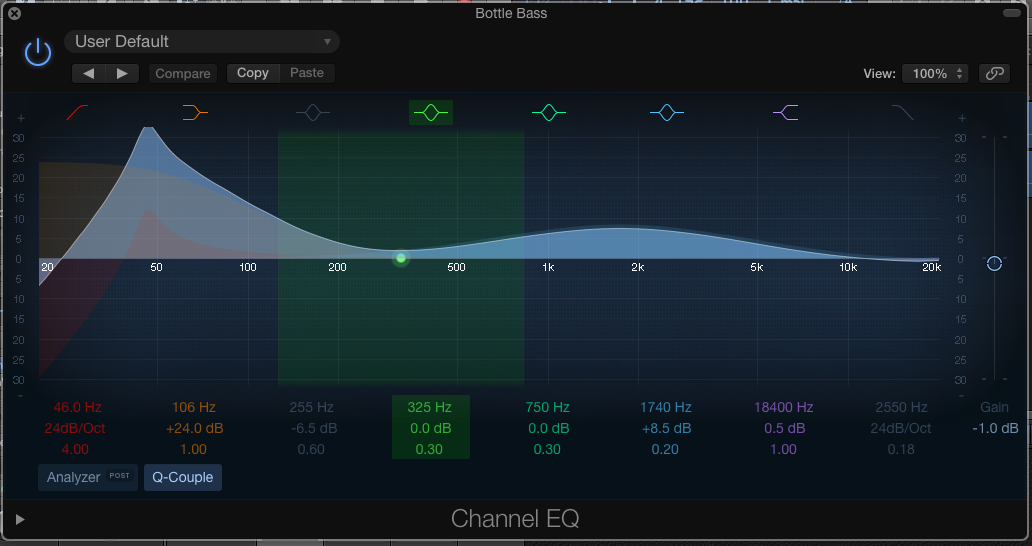
Arrangement
After Editing the Audio tracks I then had to create an arrangement for the song. This would mean when I come round to recording the guitar part on Wednesday (8th Feb), I will have a backing track to play to; I will just have the number of bars for each section.
For Example:
Intro – 8 Bars
Verse – 32 Bars
Chorus – 16 Bars
Demo
On Tuesday 7th February I conducted some Primary Research on some recording techniques to record the guitar with. We first attempted to do it via XLR through my guitar. This was possible due to my guitar having an XLR input. We found this sounded to “tinny” and not very melodic for the slow country feel of the song.
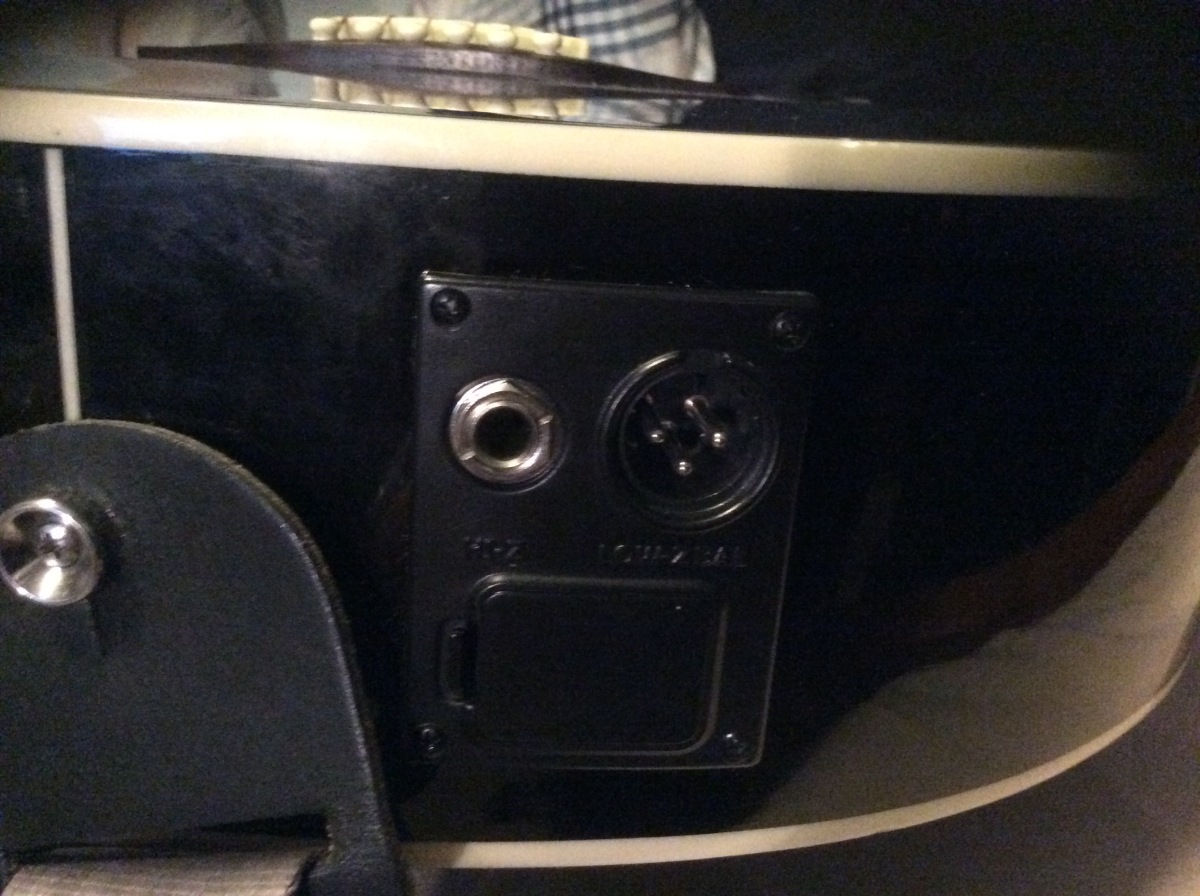
After we decided to use an SE-X1 condenser microphone to record it. This produced a much nicer, acoustic sound.
We had slight difficulty trying to get the rhythm track to play through the headphones, but then I experimented by pressing the “SF” buttons next to the “Cue A & B” knobs and it worked. The next day I then asked Steve Davis who has a lot of experience in studio work what the buttons actually do and he said, The buttons transfer the sound either through the desk or through the headphones.
I then tried to add the vocals on top but due to some of the guitar part being off-beat, this made the syllabic words harder to sing and felt too rushed. This was due to me not being able to count the beats of the song as well as attempting to play the guitar part.

To get this right I need to play the guitar part with the rhythm track so I know exactly when I need to come in for each section of the arrangement.
The Final Recording
On Wednesday 8th February I needed to record the proper take of the Acoustic Song for Project 3: Objects and Ideas. This was the last session I had booked the studio and needed to work productively and use the time wisely.
Unfortunately the day didn’t start off quite as planned as I had to wait for Nick in the morning to give a class talk which deducted about 30 minutes of studio time. We then finally got into the studio and set up the microphones and then we were told we then had a “Progression Week” talk which then set us back another 30 mins to our schedule.
😫⏰
Gradually we succeeded in getting recordings done quicker and quicker throughout the day. We started off by having me redo the guitar part for my song as the demo was out of time. Josh engineered and Angel helped by getting to know more of the controls in the studio.
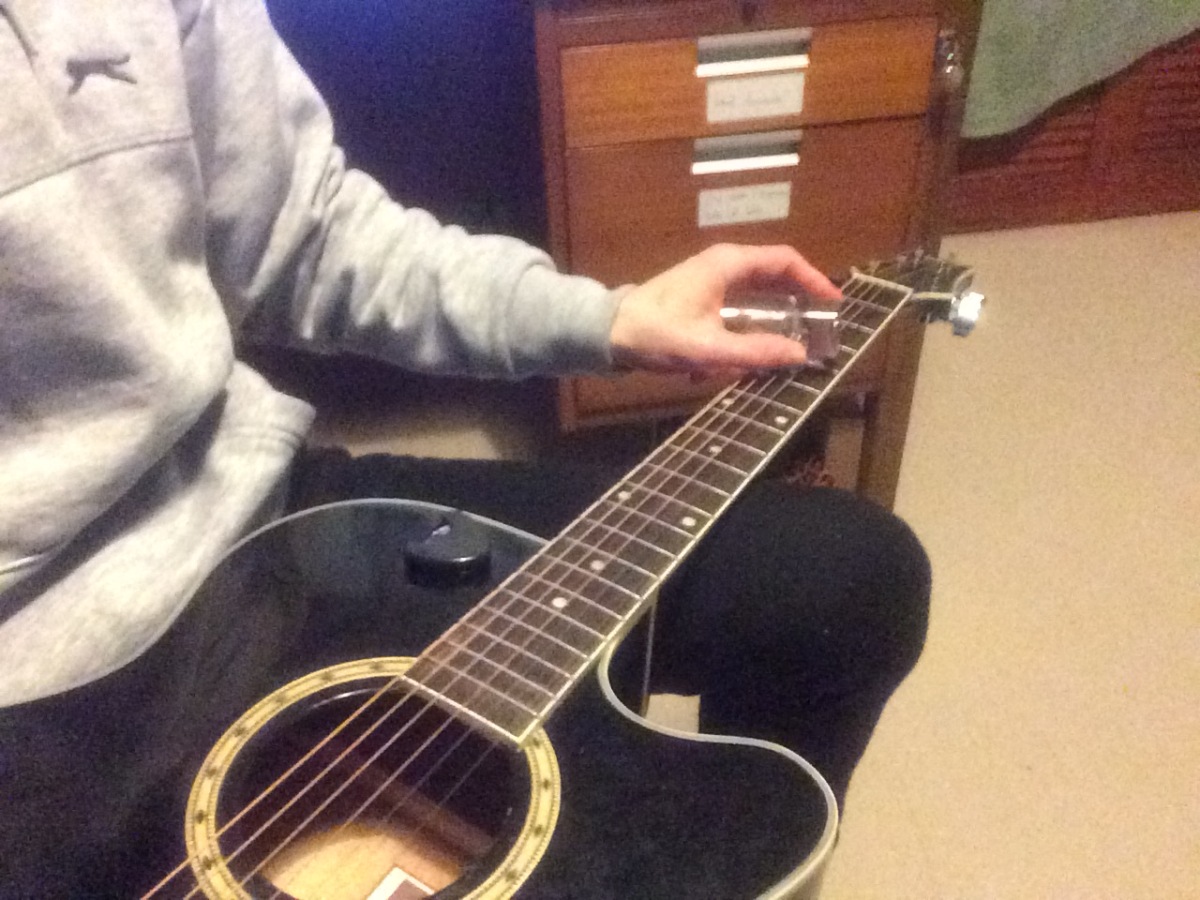
After re-recording the guitar part for my song, due to the timing being slightly out on the demo, set about listening to the track so far and getting Josh and Angel’s peer opinions on the track.
Josh said that the track could use a bass and I was keen to hear it with it. I referred back to my Microphone Research work that I produced at the start of the year and looked up which microphone would be best suited to record bass guitar. I came to the conclusion that a Dynamic Microphone was needed therefore in my Microphone research this meant I could try and use a Sennheiser 421. We didn’t have one in the college so we had to change out plan slightly. I then asked James Baker, the college’s technician and supervisor for the studio, which microphone would be the best and he said an SM-57 as it has a similar Polaroid pattern to the Sennheiser 421.
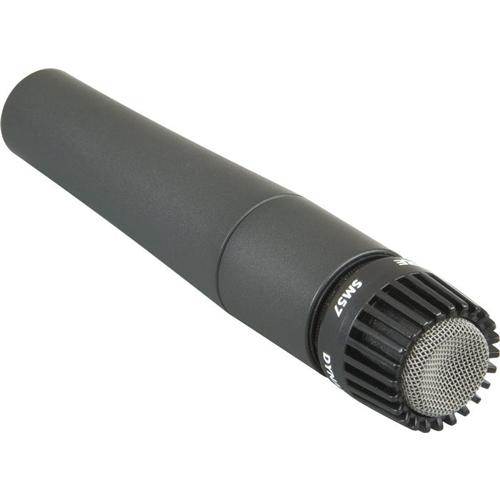

After me and Josh went over the root notes I used throughout my song so he could put a basic baseline together, we set about getting levels from the Fender Bass Amplifier and recording. Josh did his improvised baseline remarkably well and made the whole song change for the better.
After this we realised we were slight short on time as we only had the studio for the morning and due to the setbacks this made us slightly behind.
We then had to do the vocals in which Josh had another brilliant idea with the SE-X1 of making it higher up and me dinging with my head up to get that “husky, country” singing voice.

We placed the pop-filter on, checked the levels and then recorded. The recording took a few takes for my to get a grasp on the non-syllabic words, but after it was successful Angel and josh both said I need to Double track as they were very happy the way the song sounded already. I then did another vocal track and panned the first one hard left and the second one hard right. This sounded amazing!
Referring Back to the Brief
I have referred back to the Project 3 Brief and made judgements on if my work has met the Project Requirements stated by the Gods of UAL who work for the government so we are forced to obey them.
Mixing
To successfully try and mix my piece, I am going to conduct some Secondary Research on how to mix and other peoples techniques on how to make it sound even better.
Graham English (2015) displays “10 studio secrets to help you mix and produce great sounding tracks in Logic Pro X”. Here is the following tips:
- Mix after the recording is complete
- Listen to reference audio
- Plan the mix before you record
- Check your mix at multiple volume levels
English (2015) states that it’s bette to mix after the recording is complete as you may want to add more tracks which can upset the balance of the mix.
I didn’t know what English meant by the “Reference Audio” part but after reading the full information you can grasp that a need for multiple bounces is advisable as this gives you a second opinion and also listen to other songs in that particularly song genre to get a better understanding on what sound you want as the end product. English also recommended NOT bouncing the audio to MP3 format as this restricts some sound.
Graham English (2015) goes on to explain about using Reverb to recreate acoustic spaces and Simplifying Compressor settings by experimenting with Attack and Release by making use of their “Extremes” to try out different sounds. He also says that if you “Cut Frequencies before Boosting them” as boosting them can cause unwanted Phase Shifting in the Mix.
The Cell Studio (2008) recommends using the groups option in Logic Pro X in order to mix efficiently. He then goes on to explain the purpose of Buses:

The Cell Studio also recommends experimenting with two more plug-ins in Logic:
- Ringshifter (Modulation > Ring Shifter)
- Multimeter (Metering > Multimeter)
I still didn’t get the concept of buses so I did some further research.
Apple (2010) explain the concept of Buses like this:
“When you use send effects, a controlled amount of the signal is sent to the effect. Sends are typically used for effects that you want to apply to several signals at the same time.
Send effects are also called bus effects, bus send or bus returns, auxiliary send or auxiliary returns, or simply sendor returns.
In Logic Pro, the send effect is placed in an Insert slot of an aux channel strip. The signals of the individual channel strips that you want to process are sent to this aux channel strip, using a bus. The amount of signal is controlled by a Send knob on each channel strip. The audio is processed by the effect inserted in the aux channel strip, and is mixed with the stereo output.”
On Tuesday 21st February I spent the afternoon attempting to mix my ‘Isolation’ track. For this task I decided to book the smaller Studio B next door to the main studio as I was only mixing and prefer to work in a smaller space when on my own. I also wanted to use this studio as this had the Logic Pro X interface which, as I thought, made the mixing easier and more time efficient.

I started by Locating the Logic Multi-Track file on my Hard Drive and then opening it on the Mac Pro. I then played it mainly to check the sound was playing and also to hear what the track already sounded like without me mixing it. It sounded all-over-the-place and clearly needed to be mixed. I started by setting all the faders to 0 and then while the song was playing added each track in one by one. The tracks on the interface were labelled as the following:
- Rhythm Track – included the Bottle Bass Drum and the Salt Shaker
- Bass Guitar
- Acoustic Guitar
- Vox
- Vox Double Tracked
- Stereo Out
- Master
- N/A
MASTER. Master
Each time I completed a Mix I would Bounce it into Wav format and then save it in a “Bounces” folder inside my project folder and name it Mix 1, Mix 2 etc. I then did this until I had 6 different Mixes. I got this idea from my secondary research of Mixing.
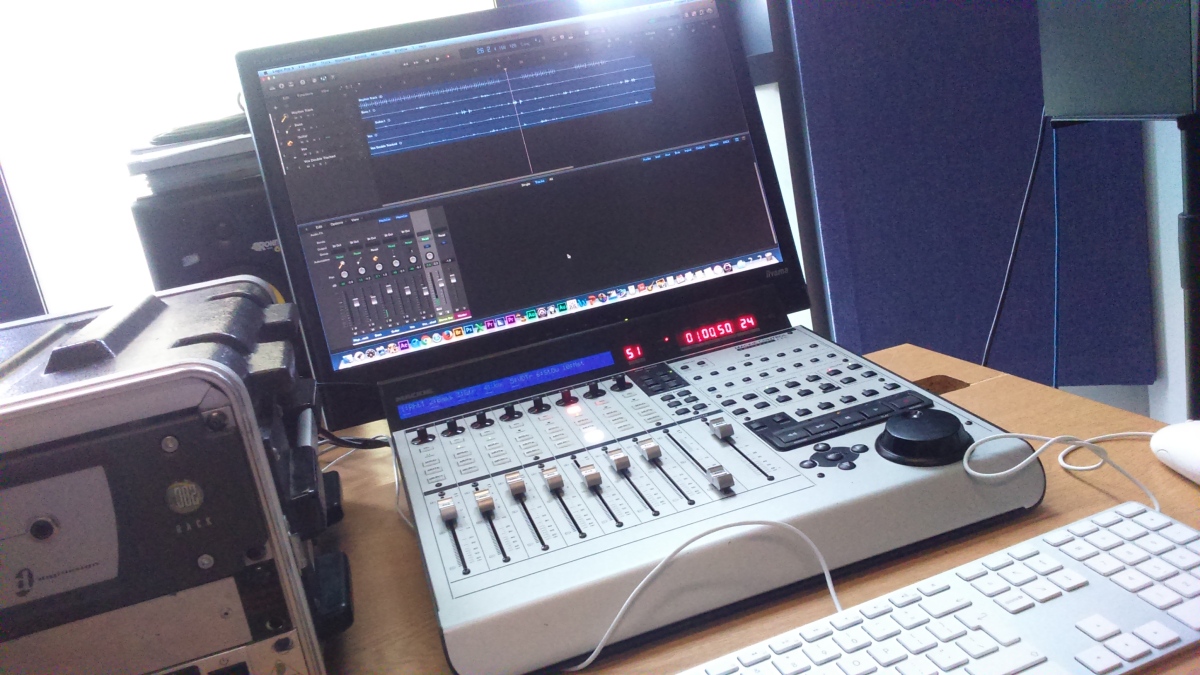
As you can see from the image below, the first mix only contains the Drums and Bass.
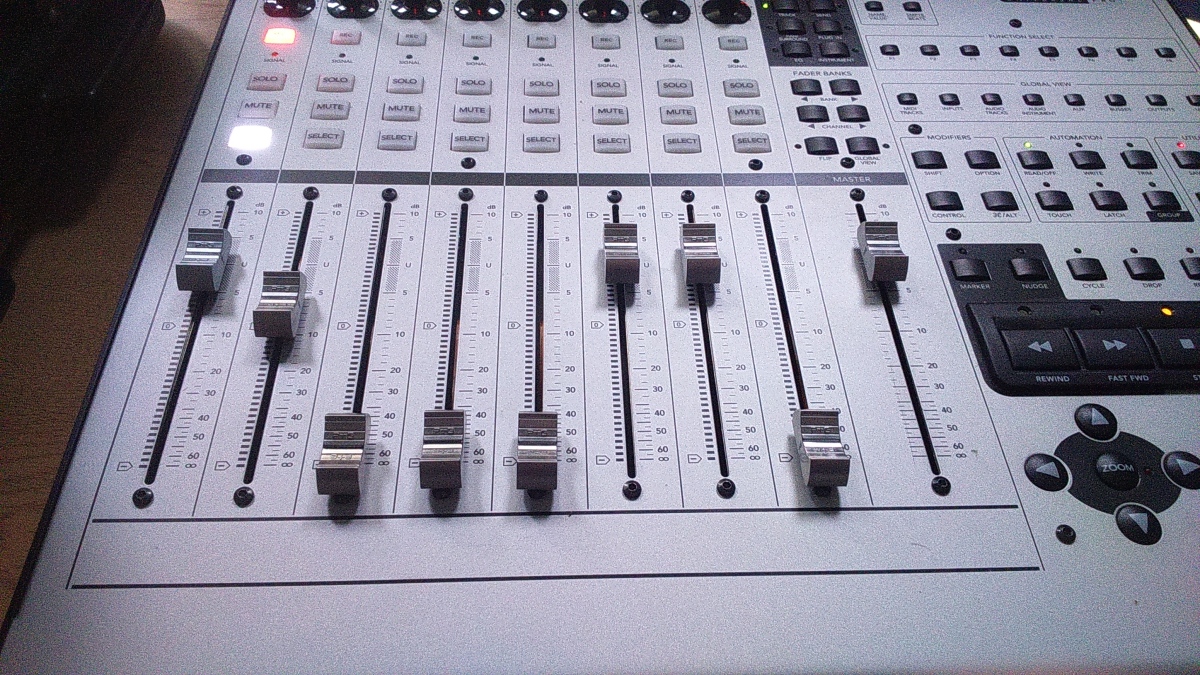
As you can see from the image below, the second mix contains:
- Rhythm
- Bass
- Acoustic Guitar

As you can see from the image below, the third mix contains:
- Rhythm
- Bass
- Acoustic Guitar
- Vox
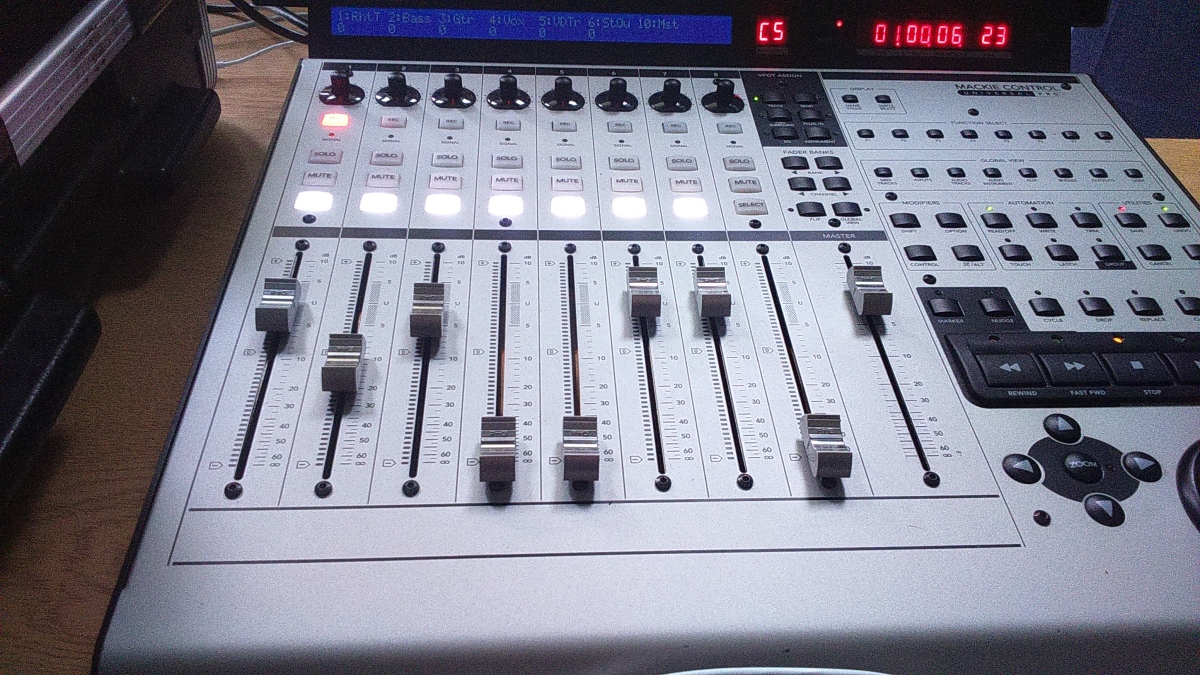
I then gradually added the Double Tracked Vocals for Mix 4.
For Mix 5 I used some of my Secondary Research I conducted yesterday (Mon 20th Feb). I experimented with the Ring Shifter plug-in on the rhythm track just out of curiosity. This made quite an interesting sound on the salt shaker that I liked but made the vocals unbalanced and made the piece feel unsettled.
For the Final Mix (Mix 6) I reverted back to not using the Ring Shifter plugin, reset all the faders and mixed really trying to focus my hearing on when each of the instruments/tracks sounded merged enough that it you can almost hear the sudden click when everything was at the correct volume. I also got feedback from Nick Osbourne who said the vocals were a bit dry. I then did some Primary Research within the project and found a plugin called “AutoFit”. This changed the vocals dramatically and made the vocals ‘wetter’ without the sound of them being in a cave when using the ‘Reverb’ plug-in.
I plan to get Steve Davis who has had experience in Mixing, to listen to my Mix(es) tomorrow (Wed 22nd Feb) and get his feedback about it. I also declined the use of buses/sends as I didn’t think it was appropriate to use them and I still don’t fully understand the purpose of them. If I was to do this project again I would probably get a Technician or someone who knows to show me visually how they work.
I did, however, use the technique recommended by Graham English (2015) about changing the volume of the Monitors. I found as I decreased the volume, you could hear the track(s) that were too loud and needed to be altered slightly. For example if I turned it down and I could hear the Guitar part louder than the rest of the mix, then the volume of this track had to be decreased.
Flex Time
On the Morning of Tuesday 28th February, I decided I wanted to have another listen to the final track and made a few changes to it. Due to me not being a professional slide guitarist, I found some of the slides were extended too long and the main note of the chord had a delayed entrance. To change this Steve Davis taught me how to use the Flex-Time tool in Logic which basically allows you to manipulate audio so it’s in time with another track. I chose to try get the slide notes for the guitar in time with the vocals. This proved successful as I just had to locate the peak of every note/beat and move it; aligning it with the peaks on the vocal track.
When I listened to the track I was shocked to hear the mix sounded all out-of-place, but then I realised that I had mixed it using the studio with speakers and playing it through headphones would make it sound a bit unfamiliar. I resisted the temptation to adjust any levels as I know I got it right when I did it in the studio.
Bibliography
Adam Smith. (2013). The Everyday Ensemble. Available: https://www.youtube.com/watch?v=TPU3NefyktQ. Last accessed 30th Jan 2017.
Apple. (2010). Logic Pro 9 User Manual. Available: https://documentation.apple.com/en/logicpro/usermanual/index.html#chapter=10%26section=9%26tasks=true. Last accessed 20th Feb 2017.
The Cell Studio. (2008). Mixing a Track in Logic Pro. Available: http://www.loopmasters.com/articles/2300-Mixing-A-Track-In-Logic-Pro. Last accessed 20th Feb 2017.
Circle of Fifths Image: http://guitaristguitarist.com/images/circle_of_fifths.jpg
Computer Music. (2012). 10 found sound production tips. Available: http://www.musicradar.com/tuition/tech/10-found-sound-production-tips-564339. Last accessed 30th Jan 2017.
Graham English. (2015). 10 Sound-Mixing Tips for Logic Pro X. Available: http://www.dummies.com/software/logic-pro-x/10-sound-mixing-tips-for-logic-pro-x/. Last accessed 20th Feb 2017.
Indie Folk Americana. (2014). Owen Campbell performs Mountain Home.Available: https://www.youtube.com/watch?v=QFEgOElElD4. Last accessed 2nd Feb 2017.
Jake Garcia. (2013). Unique Sampling: Capture Everyday Sounds To Inspire Your Music. Available: http://dottedmusic.com/2013/recording-2/unique-sampling/. Last accessed 30th Jan 2017.
Jim Dooley. (2012). Country Drum Beat 120 BPM. Available: https://www.youtube.com/watch?v=frpaV-gsguk. Last accessed 31st Jan 2017.
Michael Pilhofer, MM and Holly Day (2012). Music Theory for Dummies. 2nd ed. Hoboken, NJ: John Wiley & Sons, Inc. 94 – 95.
Rebecca OConnell. (2014). 10 Incredible Ways Electronic Artists Are Using Found Sound. Available: http://mentalfloss.com/article/58098/10-incredible-ways-electronic-artists-are-using-found-sound. Last accessed 30th Jan 2017.
SM57 IMAGE: https://andertons.scdn2.secure.raxcdn.com/2/1/images/catalog/i/xl_20466-_image2_SM57_super.jpg
SM57 POLAR PATTERN IMAGE:
jleblancmusic – WordPress.com
Featured Image: https://s-media-cache-ak0.pinimg.com/originals/92/6b/85/926b85cde50f62a069ae26cf8aa5f6b8.jpg

3 thoughts on “Acoustic Song”